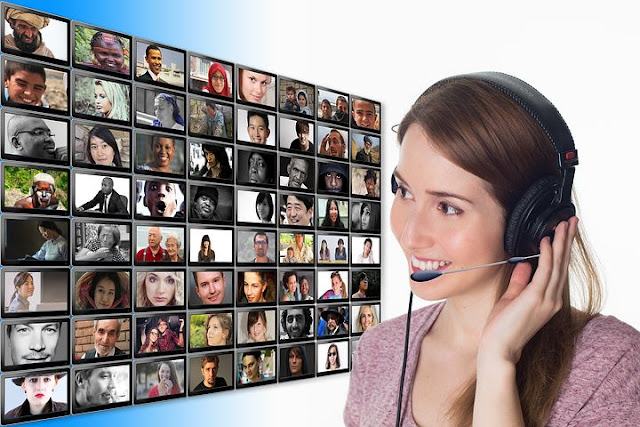 |
| Face-to-Face Communication |
Thanks for the coronavirus for changing the lifestyle, business and marketing strategy. Although we are not accepting and spreading the coronavirus in all over the world. We all relay on phone calls and emails instead of keeping in touch rather than talking to the face we work in the office. And everything seems to be going well together.
COVID-19 may have permanently changed the way many businesses operate and communicate, they need to be careful before sending it out with full face-to-face conversations. Unexpected results can occur.
There are many questions to consider. Does face-to-face deserve it - is a zoom call a replacement for a conversation in person? And the lack of face-to-face meetings is also downside.
Is it worth paying the extra costs for office space to get it, or can you save money instead of a minimal drop in production without it?
These are all important factors to consider as you determine what your post-epidemic business looks like. So let's discuss some of the benefits of prioritizing face-to-face contact and then looking at how we can still use it when working remotely.
What classifies it as face-to-face communication?
A face-to-face conversation is a conversation or conversation between two or more people in which everyone can see each other's faces.
This is different from other types of communication because the people involved in the conversation may focus on social languages such as body language, tone, inflection, emphasis, energy or anything else that may add context to words spoken outside of what you get. Email or a phone call.
Face-to-face communication is the most effective means of communication because misunderstandings are less likely. This method of communication makes it easier for people to ask follow-up questions and is important in the brain and the back and forth interactions.
5 Benefits of Face-to-Face Communication Preference
So what if your team can't meet the person in person on a regular basis? Here are five key benefits to having a face-to-face conversation.
1. Builds strong bonds
It's easy to see that it's a human being that you're talking to when you're face to face, but it's not so obvious when you're turning off email over ether, or just listening to a voice on the phone.
By making eye contact, noting and reacting to expressions, and playing social cues, individuals in an organization form more bonds. They also quickly understand each other's tendencies and personalities, facilitate collaboration and therefore increase productivity.
2. Prevents miscommunication
Miss communication is more common with email than with common-sense communication. For example, a person may place more emphasis on one task than another in face-to-face conversation, but that email usage may not be quite obvious, prompting someone to sort the wrong and complete tasks in the wrong order.
Also, it is easy to put the person back and forth which enables the person to complete the given tasks and come to a complete knowledge of what is expected of all parties.
3. Avoids misunderstandings
Sometimes emails come as a blunt or tree when they don't really mean that. It can cause hurt feelings or mistrust on one side, while the other side ignores that perception.
The result can be unnecessary relationship damage. One-to-one communication ignores this because people are more aware of how they come to be, and things like tone or facial expressions can soften the shock of something that would otherwise look like crooked language.
4. Productivity increases
When people talk face-to-face on a regular basis, people are more helpful and productive. Making things easier is when you send a quick update of a product to a coworker over a few desks rather than letting them pass a few hours of unseen firing.
If your team needs a lot of support to be effective, you need to find ways to increase facial communication.
5. Feedback Increases response
As an owner, you want to know what works and what doesn't work for your team. This is easier when you are in constant communication with your team in the office, and you should probably try to get as much feedback as you need.
But when you're managing remote calls, emails, and sometimes video conferencing, it takes more effort. By exploring more face-to-face conversations, you'll make it easier to get suggestions from your team.
How can face-to-face communication improve the performance of a remote team?
In some ways, COVID-19 happened just in time. Thanks to the many video conferencing software services, it's easier than ever for businesses to collaborate, whether at home or across the country.
By creating a face-to-face conversation schedule on a regular basis through video conferencing, your team can keep those personal connections strong. It's not a complete replacement for personal communication, but it may be enough for your organization.
However, before forcing a face-to-face conversation on your team's schedule, consider that it may not really interest you. More face-to-face conversations increase the likelihood of interruptions.
You may be tempted to schedule meetings that are not necessary or take too long, or you may be encouraged to have unnecessary and unproductive conversations between employees that are more about socialization than getting a job.
If you’re considering socializing an essential part of employee culture, that’s fine, but understand that some employees prefer face-to-face communication so they can focus on their work.
If your team doesn’t need a lot of support, use this opportunity to experiment with limited face-to-face communication and see how it affects the end product.
Top Video Conference Software Options
If you are looking for your team connected video conferencing software, you will find these three top-rated.
Zoom meetings
Zoom is one of the most popular screen sharing software platforms, and with its easy to use interface, why not find it hard to see. This face-to-face technology is accessible.
 |
| zoom meeting |
It is a web-based tool that supports up to 49 videos on the screen, a virtual hand extension feature so you can focus on the largest meeting (without interruption), and also the ability to create poles with anonymous responses.
Skype
Having been in operation since 2003, Skype video conferencing is one of the oldest dogs in the world, and it is still one of the top options for video conferencing.
Skype for Business is retiring in 2021 and will be replaced with Microsoft Teams, but the free version of Skype is a great option for teams that just want simple software options with useful features.
Google Meetings
Google Meetings is an effective meeting tool because it's so easy to create a schedule - just add a meeting to your Google Calendar and this event automatically pops up with a video conference link that you don't have to set up. (It provides you with a call-in number and PIN if you wish to make a phone call.)
Google Meet is one of the simplest options, and it can host up to 2,250 participants at a time. Use Quick Experience in Google Meeting Face-to-Face Communication.
You should ramp up or reduce the face-to-face conversation between your team. Ask one half of your team to increase the number of video conferencing meetings they have and ask the other half to limit the meetings and focus on the conversation via email.







0 Comments
Please do not enter any spam link in the comment box.